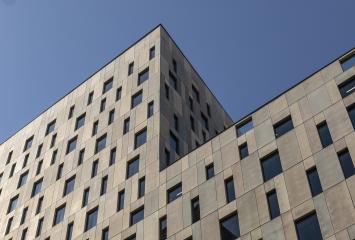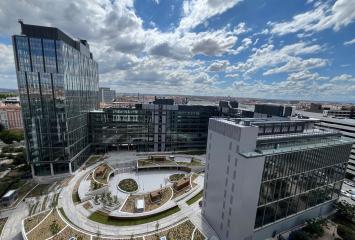Architectural upcycling: demolition or recycling?
The recycling of materials began in Asia more than a millennium ago. Around the year 1031, in Japan, waste paper began to be processed into new paper. However, as the American printer Dard Hunder wrote in 1957 in his essay Papermaking: The History and Technique of an Ancient Craft, the Chinese, the inventors of paper, had already been reusing these wastes for some time. Many centuries later, industrial and consumer society brought about an unprecedented exploitation of natural resources that placed their availability and the global climate in a situation of profound crisis. It was back then that the re-evaluation of recycling began. In buildings as well.
Recycling of buildings
The first steps of the modern pre-recycling movement were aimed at the reuse of raw materials contained in everyday and industrial items. However, it was only a matter of time before the values involved in recycling gave rise to a much more ambitious reflection on the use we make of buildings once they are no longer valid. After all, buildings also expire, whether for reasons of structural safety, uselessness or unsuitability to new needs. And the result of this reflection is clear: instead of demolishing them, as has been done throughout history, we have an ethical obligation to recycle them. This is what we do at Colonial.
Benefits of recycling buildings
The reasons for recycling buildings, and not turning them into ashes, are multiple, one of the most important being the reuse of many of their materials, which has an impact both on the conservation of natural habitats and on the reduction of greenhouse gas emissions such as carbon dioxide. In addition, the recycling of an architectural work also allows us, the real estate companies involved in it like ours, to take advantage of some of the structures of the same, thus further decreasing the carbon footprint. As Carl Elefante, president of the American Institute of Architects, once said, "the greenest building is the one that already exists".
Architectural upcycling at Colonial
At Colonial we have always worked under a key premise: to provide companies with office buildings that not only meet their needs, but also prioritize human well-being and environmental sustainability. Hence, from the very beginning, we have included building recycling as part of our strategies for producing quality assets. Miguel Ángel 23, a carbon neutral office building, is an example of green transformation through the refurbishment of an outdated building, with the addition of wind turbines to produce electricity, water consumption saving systems and photovoltaic installations.
But it is not the only one. 86D Velázquez, also in Madrid, has countless energy efficiency certifications, all thanks to the pro-sustainability decisions taken during the recycling process of the original building. And the same is true in Barcelona with Torre Marenostrum and Diagonal532, two prime executive office buildings that have experienced a great revaluation after their refurbishment and reopening, which has taken place in record time and with the least ecological impact due precisely to the recycling of the previous work. This is not a beautiful theory. It is a reality: we are recycling buildings and many other companies will gradually join in.
AMP Center: the confirmation of a trend
Architectural upcycling is just beginning to take off. Questions remain about the possibilities and limits of this practice. Nevertheless, in December 2022, the Australian investment firm AMP Capital unveiled its new 206-meter skyscraper, the tallest in Sydney. What's interesting about it? It is a recycled building. A monumental architectural work built from the structure of a previous skyscraper, erected in 1970. Named World Building of 2022, the AMP Centre is confirmation of the potential of building recycling as a sustainable solution to the changing architectural needs of an ever-evolving society.

